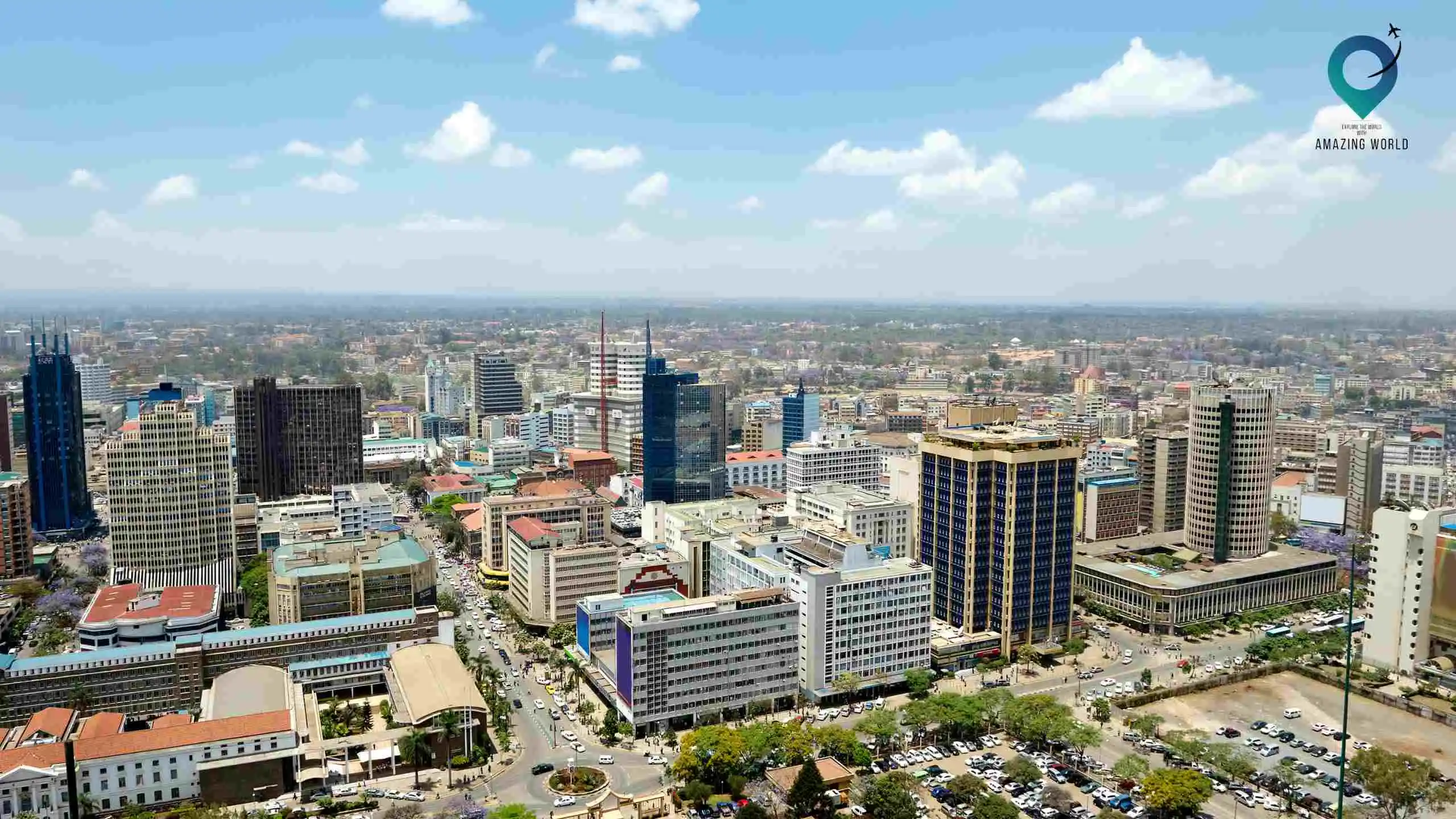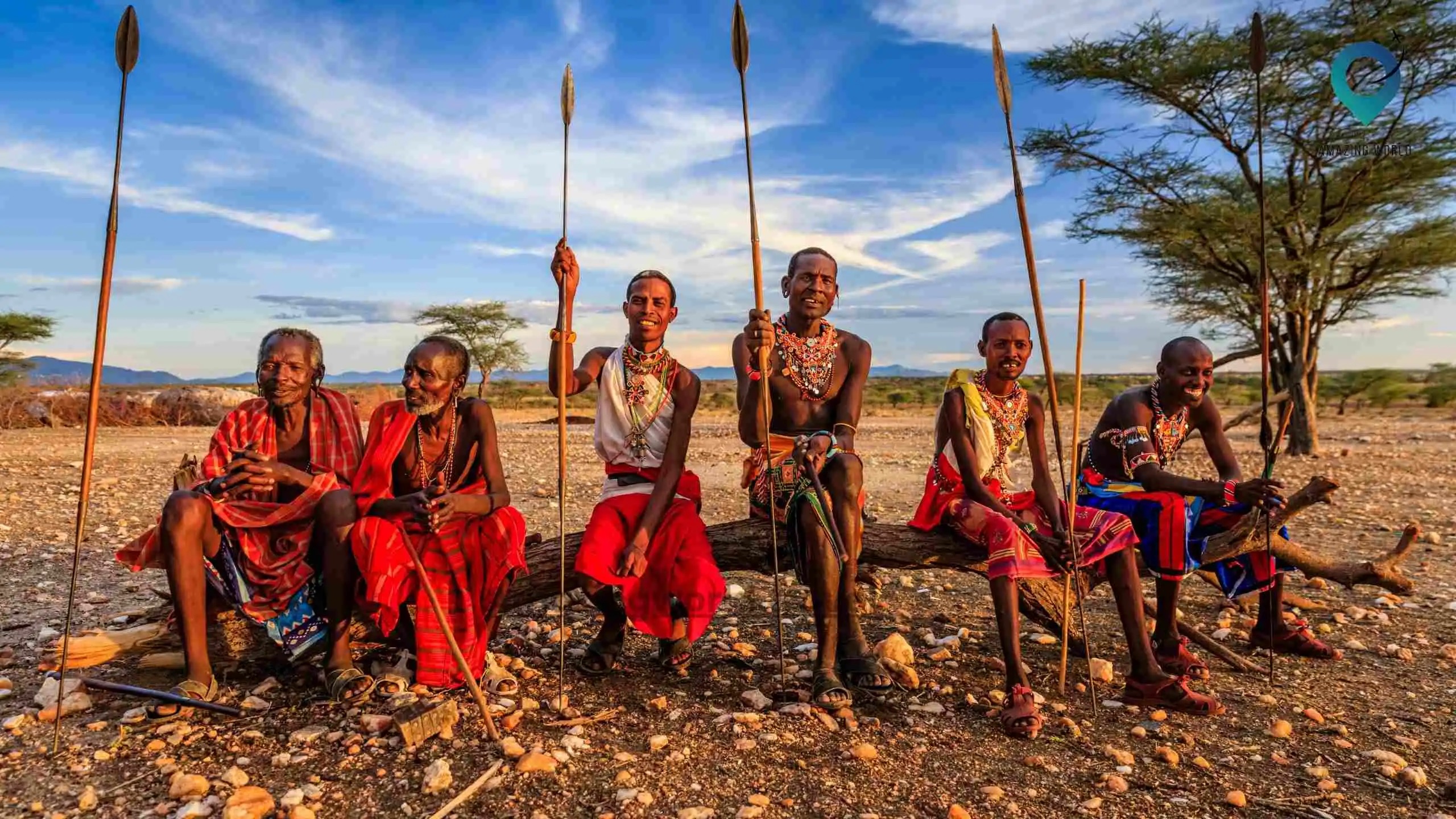When is the Best Time to Visit Kenya?
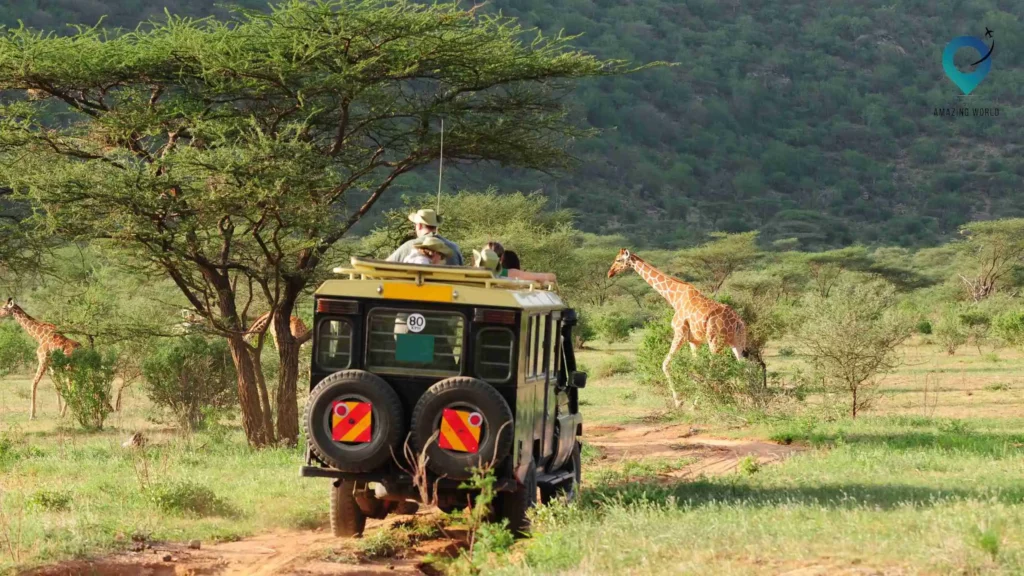
Kenya, in East Africa, is famed for its diverse landscapes, vibrant wildlife, and rich culture. With over 50 million people, it’s a melting pot of ethnicities and traditions. Nairobi, the capital, is a regional tech and finance hub.
Geographically, Kenya offers everything from lush savannahs and towering mountains to a stunning coastline along the Indian Ocean. Its renowned wildlife, including the “Big Five,” draws visitors to national parks like Maasai Mara and Amboseli.
Tourism thrives here, with attractions like the Great Migration and coastal cities like Mombasa. Challenges include poverty, political issues, and environmental concerns.
Kenya’s democratic republic has a new constitution since 2010. Its transportation network is well-developed, exemplified by the Nairobi-Mombasa railway.
The climate varies from arid to tropical, with distinct rainy and dry seasons. Travelers can enjoy safaris, cultural experiences, and pristine beaches. Staying informed about safety, especially in wildlife areas, is essential for a memorable visit.
Different Seasons and Their Pros and Cons
Dry Season (June to October)
The dry season in Kenya, which spans from June to October, is considered one of the prime times for travelers, particularly those interested in wildlife safaris. Here’s a closer look at its pros and cons:
Pros:
- Optimal Wildlife Viewing: One of the biggest draws of the dry season is the excellent wildlife viewing opportunities. With water sources becoming scarce, animals congregate around remaining waterholes, making them easier to spot. This concentration of wildlife makes for spectacular game drives and safari experiences.
- Pleasant Weather: During the dry season, Kenya experiences pleasant and mild temperatures. Days are sunny, and nights are cooler, creating comfortable conditions for outdoor activities.
- Ideal for the Great Migration: If witnessing the Great Migration of wildebeest and zebras in the Maasai Mara is on your bucket list, the dry season, specifically July to September, is when this incredible natural spectacle occurs.
Cons:
- Peak Tourist Season: The dry season is undoubtedly the most popular time to visit Kenya, resulting in higher prices for accommodations and tours. Popular destinations can get crowded, and advanced bookings are essential.
- Dry and Dusty Landscape: As the name suggests, the dry season brings parched landscapes. The grass becomes brown and vegetation is sparse, which, while making wildlife spotting easier, might not provide the lush, green scenery some travelers seek.
Wet Season (November to December and March to May)
While the wet season in Kenya, encompassing November to December and March to May, may not be the first choice for many tourists, it has its unique advantages:
Pros:
- Lush Green Scenery: Heavy rainfall transforms Kenya’s landscapes into vibrant, lush green havens. This is a paradise for photographers and nature enthusiasts who appreciate verdant surroundings.
- Fewer Crowds: The wet season sees fewer tourists, allowing for a more tranquil and intimate experience with nature. You’re less likely to encounter crowds at popular attractions.
- Birdwatching Delight: Kenya becomes a haven for birdwatchers during the wet season. Migratory birds arrive, and the increased foliage offers excellent opportunities for spotting a wide variety of bird species.
Cons:
- Heavy Rainfall: The most obvious drawback of the wet season is the heavy rainfall. This can lead to muddy and flooded roads, making travel between destinations challenging. Some parks and roads may even be closed due to impassable conditions.
- Insect Activity: The wet season also brings an increase in insect activity, including mosquitoes. It’s essential to take malaria precautions, such as using mosquito nets and repellent.
Long Rains (April to June)
Pros:
- Lower Costs: Traveling during the long rainy season often means lower prices for accommodations, tours, and activities. Hotels and lodges may offer discounts to attract visitors during this less popular time.
- Fewer Tourists: Due to the perceived challenges of the long rainy season, there are fewer tourists in popular destinations. This can translate to a more tranquil and less crowded experience at attractions and wildlife viewing spots.
- Lush Scenery: The heavy rainfall transforms Kenya’s landscapes into lush, green havens. This can be particularly appealing to nature enthusiasts and photographers who appreciate verdant surroundings.
- Unique Experiences: The long rainy season offers a different perspective of Kenya. For those who enjoy rainy weather and unique experiences, it can be an opportunity to witness a less common aspect of the country’s climate and landscapes.
Cons:
Inaccessibility: The most significant drawback of the long rain season is the inaccessibility it brings:
- Widespread Flooding: The heavy and continuous rainfall can lead to widespread flooding, causing road closures and potentially stranding travelers in certain areas.
- Road Closures: Many roads, including major highways and routes to national parks, may be closed due to flooding and mudslides. This severely limits travel options and access to attractions.
- National Park Closures: Several national parks and reserves may close entirely during this season, limiting opportunities for wildlife viewing and other activities.
Challenges for Wildlife Viewing: While some travelers might hope for unique wildlife experiences during the long rains, it presents several challenges:
- Animal Dispersal: Heavy rainfall prompts animals to disperse across larger areas in search of food and water, making it more challenging to spot wildlife. Unlike the dry season when animals congregate around water sources, they become more scattered during the long rains.
- Thick Vegetation: Abundant rainfall leads to lush vegetation growth, which can obstruct views of animals in the wild. Thick grass and foliage make it difficult to see wildlife, especially from a distance.
Muddy and Slippery Conditions: The long rainy season results in muddy and slippery trails, making activities such as hiking and game drives challenging and potentially hazardous.
Best Time for Wildlife Safaris
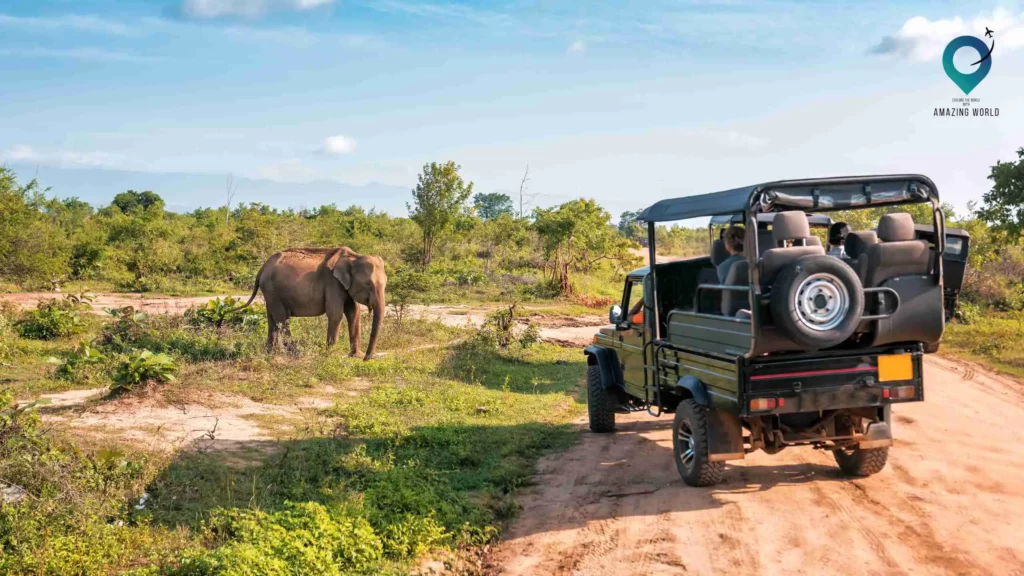
If observing Africa’s iconic wildlife is your primary goal, planning your visit during the dry season (June to October) is highly advisable. During this period, vegetation is sparse, and animals congregate around waterholes, providing exceptional game-viewing opportunities.
The Maasai Mara National Reserve is a prime destination, famous for its Great Migration, which typically occurs from July to September when vast herds of wildebeest and zebras cross the Mara River.
Also, if you are looking best hotels and Homestay deals then we recommend booking your hotels and homestay with priceline.com
Special Interests and Activities by Season
| Season | Activities and Special Interests |
| Dry Season | – Wildlife Safaris: Prime time for spotting the Big Five. |
| – Great Migration: Witness the spectacular wildebeest migration. | |
| – Hiking and Trekking: Ideal conditions for outdoor enthusiasts. | |
| – Birdwatching: Explore Kenya’s parks for diverse avian species. | |
| Wet Season | – Photography: Capture lush green landscapes and dramatic skies. |
| – Birdwatching: Migratory birds enhance the birdwatching experience. | |
| – Cultural Encounters: Engage with local communities and traditions. | |
| Long Rains | – Limited Activities: Most activities are discouraged due to rain. |
| – Cultural Immersion: Experience unique cultural events and rituals. | |
| – Relaxation: Enjoy tranquility in select lodges during the rains. |
What’s the Cheapest Time for a Safari in Kenya?
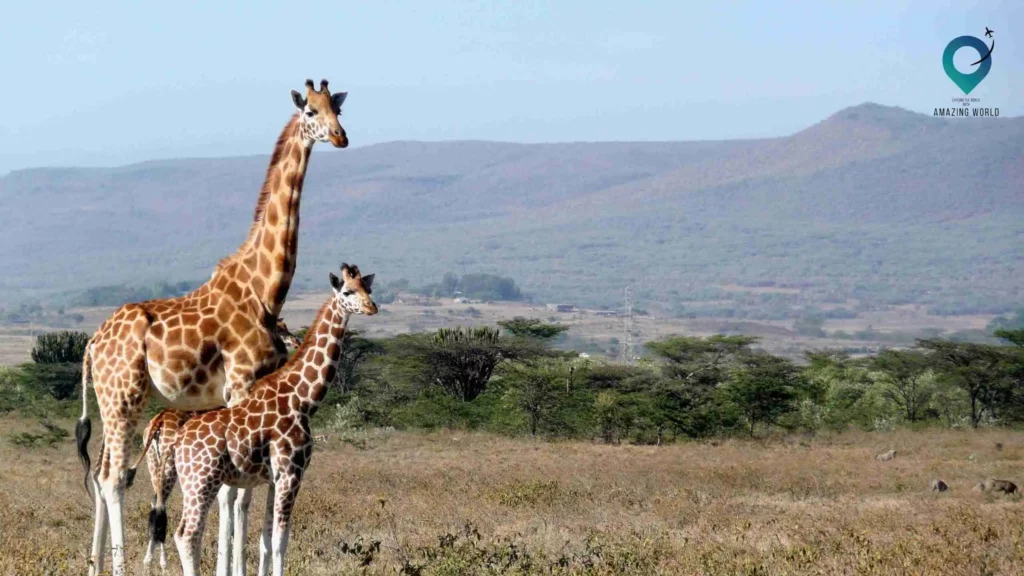
The cheapest time for a safari in Kenya, both from a currency perspective and in terms of overall expenses, is typically during the wet or “green” season, which occurs from November to December and again from March to May. Here’s a breakdown of why this period is budget-friendly:
Lower Accommodation Costs: Many lodges, camps, and hotels in Kenya significantly reduce their prices during the wet season. This is primarily due to lower demand as many tourists prefer the dry season for wildlife viewing. The reduced cost of accommodation can have a substantial impact on your overall safari budget.
Discounted Safari Packages: Safari tour operators often offer discounted packages during the wet season to attract travelers. These packages can include guided safaris, transportation, and park entrance fees at reduced rates. This can result in significant savings compared to peak tourist seasons.
Fewer Tourists: The wet season sees fewer tourists compared to the dry season. While this is often due to concerns about rainy weather, it means you’ll have a more exclusive and less crowded safari experience. Fewer tourists can also lead to lower demand for accommodations and tours, contributing to lower prices.
Unique Landscape and Wildlife Viewing: The wet season brings lush green landscapes to Kenya, providing a unique and visually striking backdrop for your safari. Additionally, the rains can trigger the birth of young animals, offering a chance to witness wildlife in a different context.
Currency Exchange Rates: Keep an eye on currency exchange rates when planning your trip. Fluctuations in exchange rates can impact the overall cost of your safari. It’s a good idea to exchange currency when rates are favorable.
Flexibility and Bargaining Power: Travelers who can be flexible with their safari plans can take advantage of last-minute deals and negotiations with accommodations and tour operators. Being open to changes in your itinerary can lead to additional savings.
Added Information: It’s important to note that while the wet season offers cost savings, it also comes with some challenges. The heavy rains can result in muddy and flooded roads, making certain areas inaccessible. Wildlife disperses more widely in search of water and food, potentially making animal sightings less predictable.
Month-by-Month Guide for Traveling to Kenya

| Month | Weather and Highlights | Recommended Activities |
| January | Warm and dry; Great Migration in Maasai Mara. | Safaris, Beach Vacations. |
| February | Pleasant weather; Active wildlife and inviting beaches. | Safaris, Beach Holidays. |
| March | Good weather; Ideal for safaris and birdwatching. | Safaris, Coastal Getaways. |
| April | Long rains bring lush greenery but challenging travel. | Not Recommended Due to Heavy Rain. |
| May | Rainy season continues, and some roads may be inaccessible. | Avoid Traveling to Kenya. |
| June | The dry season begins; Wildlife congregates around water. | Exceptional Safaris in Maasai Mara, Amboseli, Tsavo. |
| July | Prime safari month with Great Migration in full swing. | Incredible Wildlife Sightings. |
| August | Short rains continue, and the weather improves in mid-December. | Safari Adventures, Book in Advance. |
| September | Great Migration continues; favorable weather. | Cultural Festivals, Wildlife Viewing. |
| October | Abundant wildlife as dry season nears its end. | Memorable Safaris. |
| November | Exceptional wildlife viewing, is a popular time to visit. | Possible Budget-Friendly Options. |
| December | Exceptional wildlife viewing is a popular time to visit. | Beach Vacations, Safaris. |
How to Pick the Best Time to Go on a Kenya Safari: 5 Best Tips
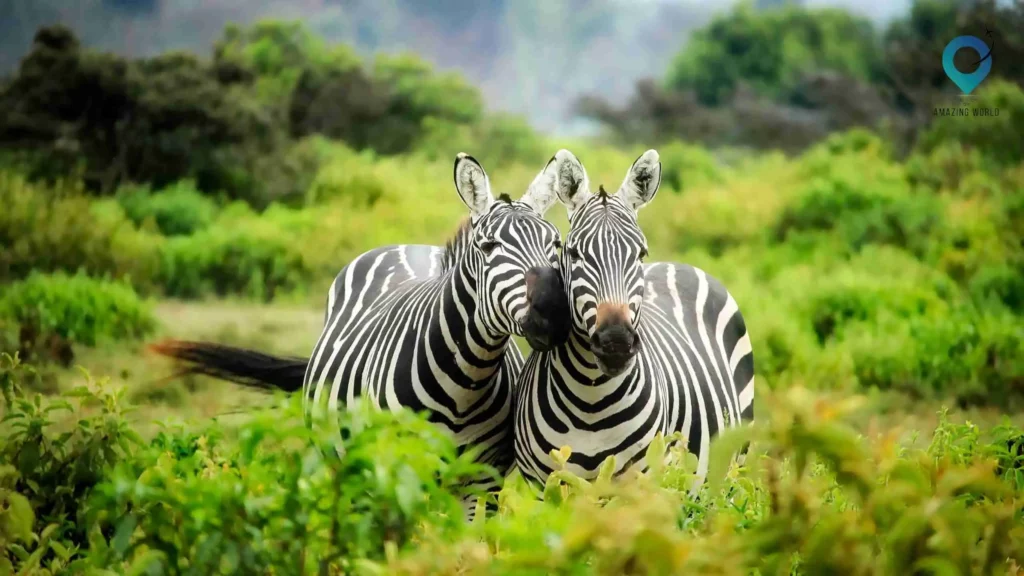
Choosing the optimal time for your Kenya safari involves considering several factors:
1. Consider the Wildlife Migration:
The Great Migration is one of Kenya’s most spectacular wildlife events. Millions of wildebeest and zebras cross from Tanzania into Kenya’s Maasai Mara between July and September. If witnessing this natural phenomenon is a priority, plan your safari during this period.
2. Think About the Dry Season:
Kenya’s dry season, from June to October, is generally the best time for safaris. The weather is pleasant, and wildlife congregates around water sources, making it easier to spot animals. The grass is shorter, improving visibility.
3. Avoid the Rainy Season:
Kenya’s rainy season, especially the long rains from April to June, can bring challenging travel conditions. Roads may be muddy, and some parks might be inaccessible. Wildlife disperses more widely during this time, making sightings less predictable.
4. Shoulder Seasons Offer Advantages:
Consider visiting during the shoulder seasons, such as November or February. While these months may have some rain, you can find more budget-friendly options, fewer crowds, and still enjoy wildlife viewing.
5. Research Specific Parks and Regions:
Different parks and regions in Kenya have unique wildlife behaviors and attractions. Research the parks you plan to visit and their specific wildlife patterns. For example, Amboseli is excellent for elephant sightings, while Samburu offers a chance to see rare species like the Grevy’s zebra.
Conclusion.
Kenya is a captivating destination that offers a blend of natural wonders, diverse cultures, and unique experiences. From its stunning landscapes, including savannahs and mountains, to its renowned wildlife, such as the “Big Five,” Kenya’s allure is undeniable. The nation’s rich cultural diversity, exemplified by its numerous ethnic groups, adds depth and authenticity to any visit.
Nairobi, the bustling capital, serves as a testament to Kenya’s growth and development, particularly in the realms of technology and finance. Its well-established transportation network, including the Nairobi-Mombasa railway, facilitates travel within the country.
Tourism plays a pivotal role in Kenya’s economy, with iconic attractions like the Great Migration and coastal cities like Mombasa drawing visitors from around the world. However, Kenya also faces challenges, including poverty, political issues, and environmental concerns.
Travelers are enticed by Kenya’s varied climate, which ranges from arid to tropical, with distinct rainy and dry seasons. Whether one seeks thrilling safaris, cultural immersions, or tranquil beach vacations, Kenya offers a diverse range of experiences.
How much did you like Our Detailed Kenya Travel Guide: Best Time to Visit Kenya? Review Also, please share these Blogs with your friends on social media.
Recommended
Kenya Map Locations
Kenya FAQs
What is the best time to visit Kenya for a safari?
The best time for safaris is during the dry season, which runs from June to October. However, specific wildlife events like the Great Migration can influence the ideal time for your visit.
Do I need a visa to enter Kenya?
Most travelers require a visa to enter Kenya. Check the Kenyan Embassy or Consulate website for visa requirements and application procedures based on your nationality.
What vaccinations or health precautions should I take before visiting Kenya?
Consult your healthcare provider or a travel clinic for recommended vaccinations and health precautions. Yellow fever vaccination is often required. Malaria prophylaxis is also advised.
What is the currency in Kenya, and can I use credit cards?
The currency in Kenya is the Kenyan Shilling (KES). Credit cards are widely accepted in urban areas, but it's advisable to carry some cash for rural areas and smaller establishments.
Can I drink tap water in Kenya?
It's recommended to drink bottled or purified water in Kenya to avoid waterborne illnesses. Bottled water is readily available.
What languages are spoken in Kenya?
English and Swahili are the official languages. Swahili is widely spoken, and many Kenyans are multilingual, speaking their ethnic languages as well.
Is it necessary to tip in Kenya?
Tipping is customary in Kenya, especially for service staff and guides. It's a gesture of appreciation, and the amount can vary based on the level of service.
What is the Great Migration, and when can I witness it in Kenya?
The Great Migration is an annual wildlife spectacle involving the movement of wildebeest and zebras between Tanzania and Kenya. You can witness it in the Maasai Mara from July to September.
Are there cultural norms or dress codes I should be aware of when visiting Kenya?
It's advisable to dress modestly when visiting local communities and religious sites. In urban areas, casual attire is acceptable. Respect for local customs and traditions is appreciated.

Meet David Hoper, a passionate travel Blog writer with 7+ years of experience in travel content. Through his exemplary storytelling and engaging narratives, he shares his experiences and brings destinations to life. With a keen eye for detail and a love for exploration, he has cultivated a diverse portfolio of travel blogs that inspire and inform readers worldwide.



